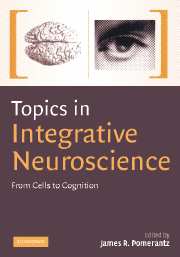Book contents
- Frontmatter
- Contents
- List of contributors
- Preface
- Overview of neuroscience, choice and responsibility
- 1 Neuroscience, choice and responsibility
- PART I HIGHER ORDER PERCEPTION
- PART II LANGUAGE
- Introduction to Language Section
- 5 Varying degrees of plasticity in different subsystems within language
- 6 The functional architecture of speech perception
- 7 Varieties of silence: the impact of neuro-degenerative diseases on language systems in the brain
- 8 Why is language unique to humans?
- PART III MEMORY SYSTEMS
- PART IV SENSORY PROCESSES
- Index
- Plate section
- References
6 - The functional architecture of speech perception
Published online by Cambridge University Press: 08 August 2009
- Frontmatter
- Contents
- List of contributors
- Preface
- Overview of neuroscience, choice and responsibility
- 1 Neuroscience, choice and responsibility
- PART I HIGHER ORDER PERCEPTION
- PART II LANGUAGE
- Introduction to Language Section
- 5 Varying degrees of plasticity in different subsystems within language
- 6 The functional architecture of speech perception
- 7 Varieties of silence: the impact of neuro-degenerative diseases on language systems in the brain
- 8 Why is language unique to humans?
- PART III MEMORY SYSTEMS
- PART IV SENSORY PROCESSES
- Index
- Plate section
- References
Summary
Introduction
The language system is that aspect of mind/brain function that forms the basis for phonological, morphological, syntactic, and semantic computation. The “currencies” (or the ontology) of this central and abstract computational system are representations that are amodal, for example the concepts “feature” (phonology) or “affix” (morphology) or “phrase” (syntax) or “generalized quantifier” (semantics). Representation and computation with such concepts is typically considered independent of sensory modalities. Of course, the linguistic computational system is not isolated but interacts with other cognitive systems and with sensory–motor interface systems.
With regard to the input and output, the system has at least three modality-specific interfaces: an acoustic-articulatory system (speech perception and production), a visuo-motor system (reading/writing and sign), and a somatosensory interface (Braille). Speech and sign are the canonical interfaces and develop naturally; written language and Braille are explicitly taught: barring gross pathology, every child learns to speak or sign (rapidly, early, without explicit instruction, to a high level of proficiency), whereas learning to read/write Braille requires explicit instruction, is not universal, and occurs later in development.
In this chapter we focus on speech perception, specifically with regard to linguistic constraints and cortical organization. We first outline the key linguistic assumptions, including the concept of “distinctive feature,” and then discuss a functional-anatomic model that captures a range of empirical findings.
The linguistic basis of speech perception
The central importance of words for language use and understanding
An essential part of the cognitive ability underlying the linguistic behavior of a competent speaker of a language consists of knowing the words of the language or their constituents (roots).
- Type
- Chapter
- Information
- Topics in Integrative NeuroscienceFrom Cells to Cognition, pp. 154 - 180Publisher: Cambridge University PressPrint publication year: 2008
References
- 1
- Cited by



